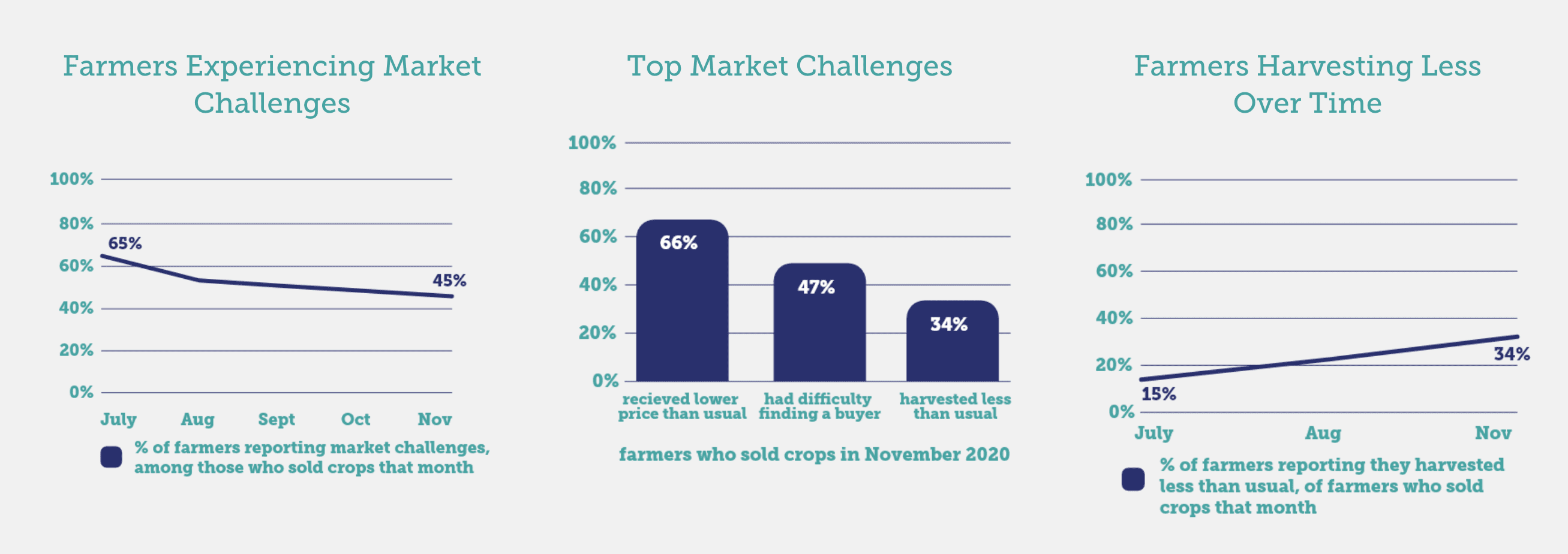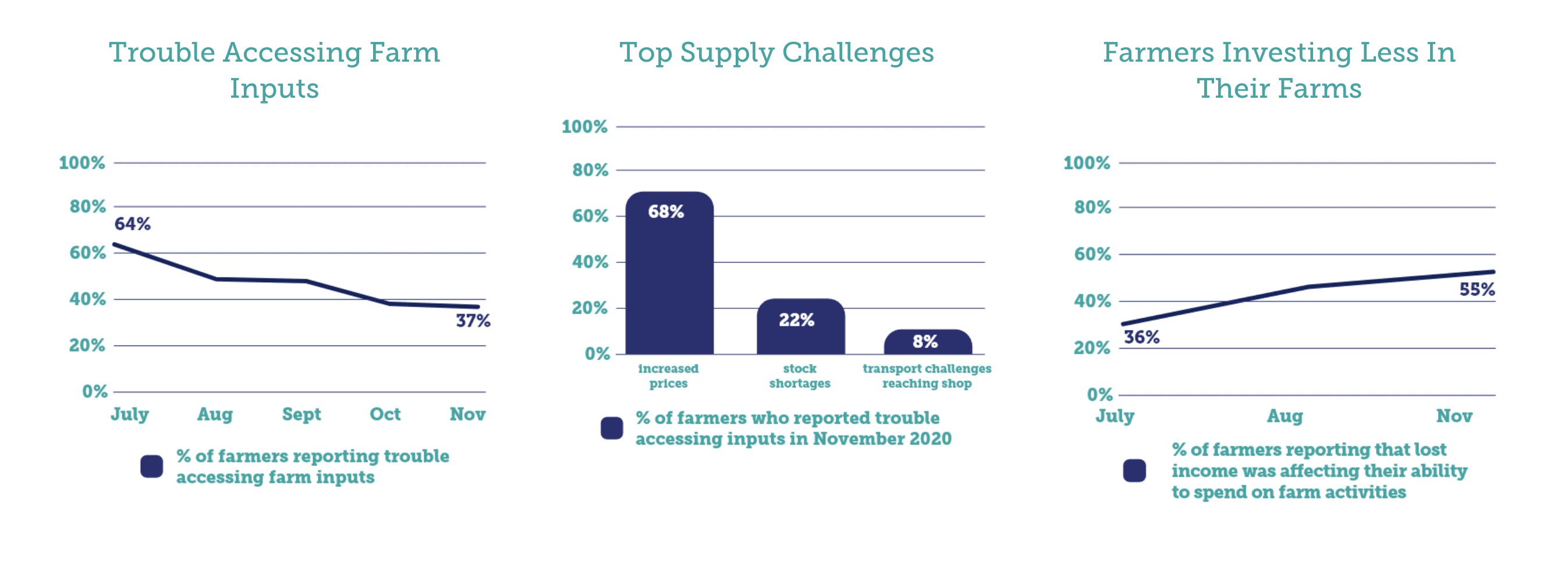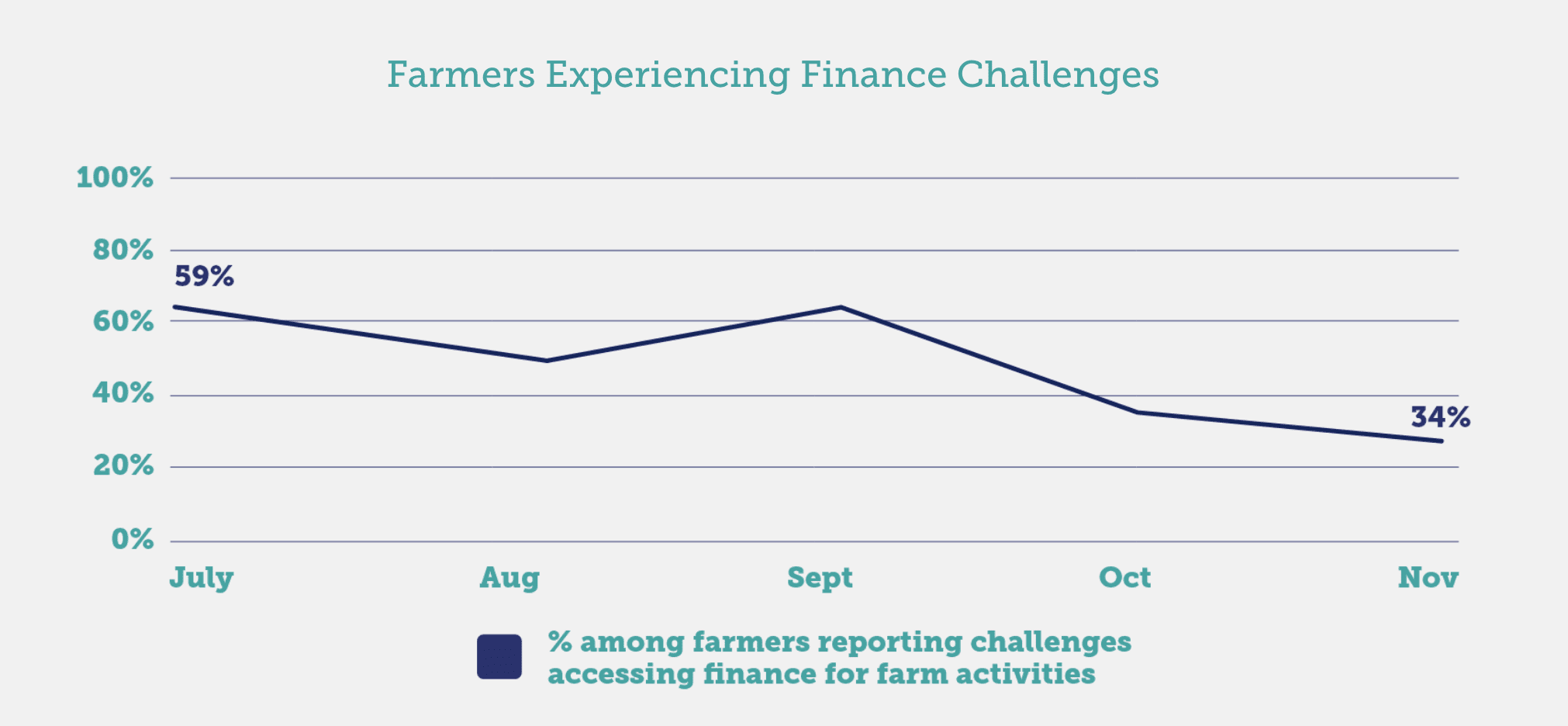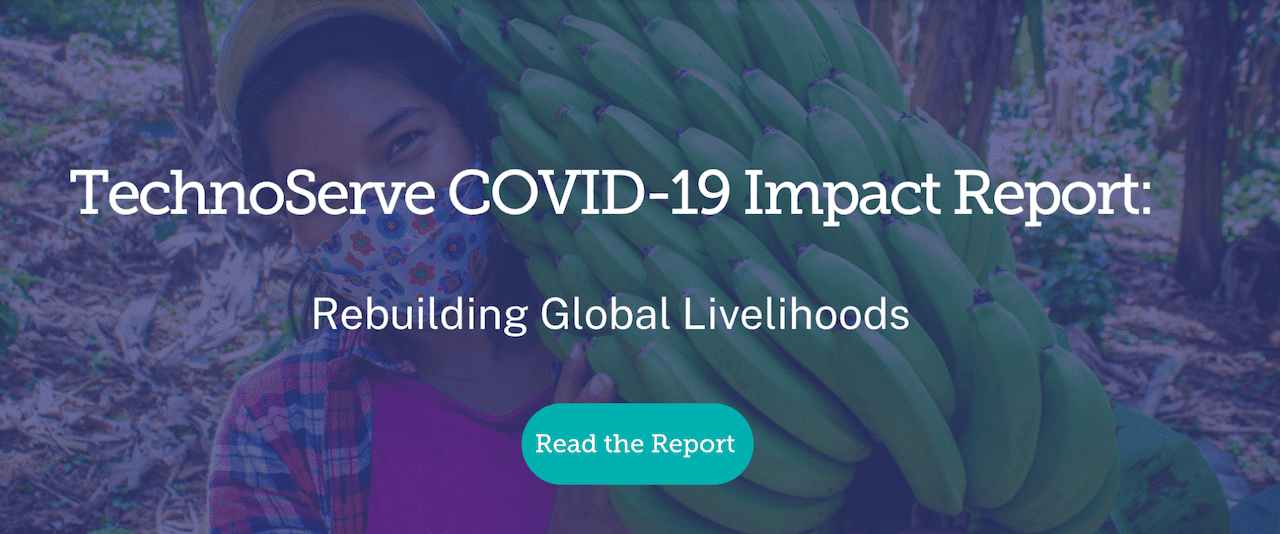How Has COVID-19 Affected Commercial Agriculture in Emerging Economies?
TechnoServe’s COVID-19 Impact Report examines how the pandemic disrupted key sectors of emerging economies and the livelihoods of those who work in them. Our first feature in our blog series on the report highlights the challenges smallholder farmers faced last year and the promising solutions that could help stave off a future production crisis.
Around the globe, almost 80% of those living in poverty live in rural areas where farming is one of the primary sources of income. Growth in agriculture is two to four times more effective than in other sectors at raising incomes in developing countries. And crops in commercial agriculture that have high market value, such as coffee, cocoa, and cashew, can provide particularly high gains in farmer income.
But in the last year, as cases of COVID-19 swept across the world, smallholder farmers found themselves in a particularly vulnerable position. Travel restrictions, supply disruptions, and rising prices for inputs and food took a toll on their incomes, particularly in the first few months.
The nation-wide COVID-19 lockdown posed a severe challenge for farmers like me. All my farm-related work was halted…There was not just a loss of livelihood since the wholesale agricultural markets were shut, but the resultant disruptions in the supply chain and restrictions on movement also led to us being unable to access basic commodities, such as groceries and vegetables.”
— N. Mangamma, farmer in Andhra Pradesh, India.
These challenges were felt by farmers around the world. And while these acute problems had eased by the end of the year, longer-term effects began emerging: underinvestment in farms, lower crop production levels, and sustained challenges accessing adequate food. If unaddressed, these problems will create a vicious cycle of lost income for smallholder farmers around the world.
Commercial Agriculture and Market Challenges
One of the most immediate effects of the pandemic was on farmers’ abilities to sell their crops. Many struggled to find buyers — and even if they did, they were often forced to sell their crops at low prices. While the situation improved toward the end of the year, nearly half of those who tried to sell their crops in November still reported problems.

These problems plagued farmers at relatively consistent rates throughout most of last year — and caused roughly half of farmers, in surveys from July through November, to report that they were worse off financially than they had been at the same time last year.
This led to a problem that intensified as the year progressed: low on cash and unable to invest as much in their farms, roughly one in three farmers reported harvesting a lower quantity of their crop than usual in November, a jump of 19 percentage points. Lower yields meant lower incomes and further underinvestment in their farms.
Commercial Agriculture and Supply Challenges
Farmers also experienced pandemic-related supply chain disruptions that affected their access to farm supplies such as seeds, fertilizer, and plowing equipment. Roughly 50-60% of farmers reported challenges accessing agricultural inputs in the middle of last year, with 37% continuing to experience problems as of November 2020.
With the lockdown, there’s been an increase in price on everything, so I am reducing the size of the farm, using recycled seeds and animal dung.”
— Woman farmer in Kaduna province, Nigeria.
Higher transport and business costs for input providers in the middle of the supply chain led to increased purchase prices for farmers, putting many supplies out of their reach. More than two in three farmers who experienced challenges accessing inputs cited high prices as a problem — a number that has remained steady from our first survey in July through the end of the year.

Finance Challenges
As farmers’ incomes dropped due to supply chain challenges, demand disruptions, and falling prices, they struggled to find ways to cope. Many ended up reducing their households’ food intake or purchasing less expensive or less preferred foods. About a third tapped into their savings in order to get by.
Smallholder farmers consistently reported trouble obtaining additional capital to help them through the hard times. Three out of five respondents had trouble accessing finance in July, and two out of five still struggled with the issue at the end of 2020.

As banks and other financial institutions were themselves grappling with extended market uncertainty, they became more hesitant to provide loans and increase their risk exposure. Meanwhile, other sources of income, such as side businesses, were also often affected by coronavirus disruptions.
Looking Ahead: COVID-19 and Smallholder Farmers
Since long before the COVID-19 pandemic, TechnoServe has been working closely with smallholder farmers, equipping them with the knowledge, tools, and connections they need to grow their incomes and transform their lives. Now, to help these farmers survive the COVID-19 economic shock, TechnoServe adjusted its approach to provide digital training and support, and to apply its market expertise to the crisis situation.
In Benin, for instance, one of the country’s most important agricultural exports — cashews — took a big hit at the onset of the pandemic. In spring 2020, cashew prices crashed 70% below the government floor price because of travel restrictions and border closings, threatening the livelihoods of over 200,000 smallholder farmers who depend on the crop for their income.
TechnoServe worked to ensure that supply chains continued operating to the benefit of smallholder farmers. This required a response across the value chain: helping to calm jittery markets; establish new platforms connecting farmers and buyers; and support farmers in finding new buyers after pandemic-related market shifts.
This helped provide sufficient market confidence to see prices return to normal levels within weeks. As a result, cashew farmers were able to maintain a reliable income in a year otherwise marked by significant financial uncertainty.
Crop Aggregation Models to Secure Inputs in India
And in India, pandemic-related restrictions on movement made it difficult for many farmers to access high-quality, affordable inputs. TechnoServe helped address this “last mile” distribution problem by applying methods for aggregating crops to aggregating input orders, providing input suppliers with an incentive to meet these larger orders, while maximizing farmers’ purchasing power.
As a result, 2,800 smallholder farmers received high-quality inputs at good prices, delivered to their door by their farmer group. This enabled the farmers to invest in their future harvests — and future income — in a time of great financial uncertainty.
The COVID-19 crisis has upended the lives of millions of small-scale farmers around the world who rely on commercial agriculture for their livelihoods. However, with flexible and timely support, these farmers can emerge from the crisis even stronger.





